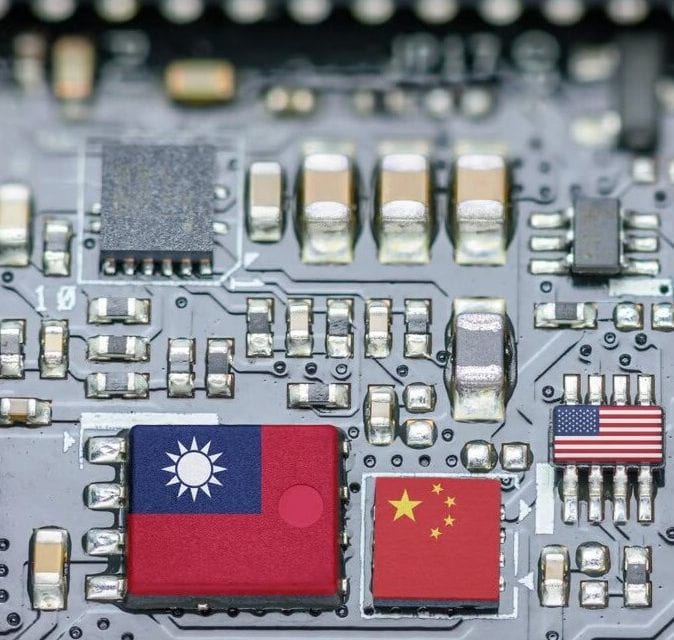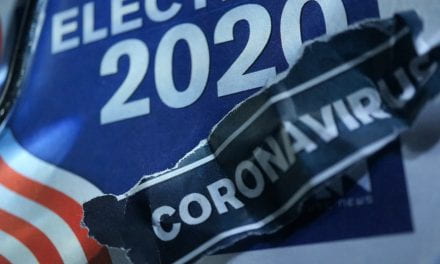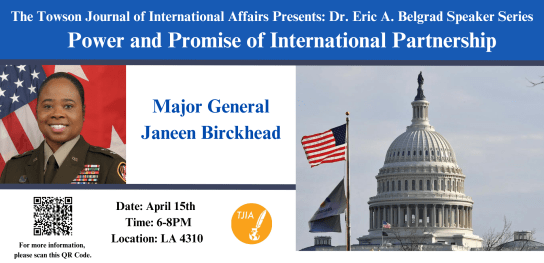To remind those that continue to doubt China’s resolve to achieve reunification with Taiwan, President Xi Jinping affirmed during his address to the 20th National Congress of the Chinese Communist Party that, “We will continue to strive for peaceful reunification with the greatest sincerity and the utmost effort, but we will never promise to renounce the use of force, and we reserve the option of taking all measures necessary.” [1] Beijing has consistently expressed its willingness to exhaust all possible options to defend its One China Policy as it pertains to Taiwan, and it should be noted that this stern reminder came on the heels of Speaker Pelosi’s unsanctioned visit to Taiwan earlier this year. Tweeting about her meeting with Taiwan’s President, Tsai Ing-wen, her tone mirrored that of President Xi, “make no mistake: America remains unwavering in our commitment to the people of Taiwan – now & for decades to come.” [2] This back and forth reveals that both states have a conflicting interest over the island.
For China, the fixation on Taiwan has a historical basis. For the U.S., Taiwan represents a key economic interest worth defending. But at what cost? Taiwan is a small island off the coast of China that was ceded in 1945 by Japan to China under the agreements of the Cairo Declaration of 1943 [3]. After Mao Zedong and the Chinese Communist Party (CCP) seized power in 1949, Chiang Kai-shek and the Kuomintang (KMT) fled to what is now Taiwan [4]. Since 1949, Taiwan’s status as an autonomous state has been contested, but Beijing has consistently asserted its claim over the island, and for them, reunification has been perpetually within reach. Ultimately, China’s motivation to keep Taiwan firmly within its geopolitical sphere of influence may exceed the desire of the U.S. to continue to benefit from the island’s microchip industry. If (or when) China decides to use force to annex Taiwan because it is unsatisfied with the status quo regarding the Taiwan question, where does this leave the U.S.?
What if there was a way for the U.S. to have its cake and eat it too, so to speak? This would be a scenario in which the U.S. is able to ensure that it has access to a steady supply of microchips while reducing its precarious dependence on Taiwan for them. With the passage of the CHIPS and Science Act in August 2022, the U.S. aims to incentivize domestic microchip manufacturing, and as a result, actualize a scenario where it becomes more self-reliant in this respect. [5] By doing this, the U.S. could halt, or at the very least, slow down the proverbial escalatory ramp towards armed conflict with China over Taiwan. Continued entanglement resulting from conflicting interests over the island would inevitably lead to a showdown between the two state actors.
During the COVID-19 pandemic, the world’s appetite to use electronics and consume media did not regress; in fact, the opposite trend occurred as more people turned to their digital pacifier, so to speak. [6] For most, quarantine consisted of incessant media consumption. The development of this symbiotic relationship with electronics was (and continues to be) fueled by microchips – usually sourced from Taiwan. [7] Due to its reliance on its booming chip manufacturing industry, Taiwan’s economy thrived in 2020 while the economies of most states shrunk [8]. Taiwan Semiconductor Manufacturing Company (TSMC) was integral to the country’s economic boom during the pandemic. This firm is a microchip behemoth and is responsible for making Taiwan the global epicenter for chips. To put things into perspective, TSMC has a market share of 90 percent for all chips used in electronics around the world. [9] Moreover, the chipmaker is the most valuable firm in Asia with a market share estimated at $400 billion. [10]
Undoubtedly, Taiwan’s primacy in the chip manufacturing sector has proven to be fundamental to both the U.S.’s and the world’s technological infrastructure. Although establishing a domestic microchip industry that is robust enough to rival that of Taiwan’s is neither guaranteed nor likely to be accomplished overnight, it is critical. I propose that the U.S.’s and China’s conflicting interests over Taiwan is tumultuous and fragile and will inevitably lead to armed conflict as tension increases, hence making U.S. self-reliance in chip manufacturing a matter of urgency. An understanding about the conflicting designs of the U.S. and China over the island will provide some reassurance that this legislation could represent the genesis of a viable exit strategy. For the U.S., the island of Taiwan is akin to quicksand. As tensions escalate, the U.S.’s is positioned to lose the most if this tripartite entanglement goes awry.
Why does the United States Care About Taiwan?
Some believe that the issue of Taiwan is an “American issue” in lieu of how invested recent administrations have been in the affairs of the island. [11] Although, this is a reasonable sentiment, it may be too reductive. Better articulated, the issue of Taiwan is especially an
American issue, but it is also a world issue. This is due to the value that Taiwan brings to the global economic landscape. Besides the United States, Taiwan’s biggest trade partners include China, Japan, and the European continent. [12] Semiconductors sourced from Taiwan power electronics and household products that the developed world’s population has become reliant on. Besides microchips powering household products, they are also crucial components in products such as military hardware, cars, etc. Recently, it was revealed that TSMC played a critical role in fulfilling the microchip shortage for the American automobile maker, Tesla. [13] Considering how quickly Tesla cars have become ubiquitous on American roads, the distal contribution of the Taiwanese chip maker to the American economy cannot be understated.
Boasting about Taiwan’s comparative advantage in producing microchips, its president, Tsai Ing-wen, openly admitted that this commodity has afforded it a “silicon shield”, [14] comparing the value of microchips today to the value of oil 100 years ago. She argues that because microchips power the world, they have the same inherent value that was given to oil during second industrial revolution during the twentieth century. Some would argue that the Taiwanese monopoly over microchip production has kept the peace between the U.S. and China. [15] Both states recognize that they must avoid taking measures (i.e., armed conflict) that could have a second-order effect of destabilizing Taiwan and hence risk halting the production of these microchips.
Others argue that geopolitics are most important in shaping the United States’ interests regarding Taiwan. Specifically, they argue that Taiwan represents an opportunity to contain the power of China as a hegemon. I would argue that this potential U.S. geopolitical consideration is secondary to its economic interests in Taiwan, which are primary. Many American firms such as Apple [16] and the aforementioned Tesla have turned to Taiwan to fulfil their demand for microchips in light of the fickleness of the communist regime in China in meeting those needs. The symbiotic relationship between Taiwanese chip makers and American technological firms can be accurately described as a perfect union. Conversely, the reliance on Taiwanese microchips has made the U.S. a vulnerable participant of an already tumultuous tripartite relationship. For the United States, Taiwan represents a key economic interest, which it has demonstrated its willingness to defend. Similarly, for the Chinese, Taiwan has some economic value that is not negligible. More importantly, China has a historical and cultural claim over Taiwan that automatically ratchets up its proclivity to utilize armed conflict to ensure that both countries are reunified.
Why does China Care About Taiwan?
For the U.S., different aspects (i.e., economic, geopolitical, sovereignty, etc.) of the island have appealed to different presidential administrations. [17] Furthermore, the significance of Taiwan in U.S. foreign policy has vacillated over time and can hardly be described as straightforward. [18] In comparison, China’s interest in Taiwan has always been obvious. When it comes to Taiwan, China has been consistent in its One Country, Two Systems approach. [19] This framework prescribes a relationship in which “Taiwan would become a special administrative region like Hong Kong and Macau.” [20] For China, the Taiwanese geopolitical destiny has always been inextricable from that of the Chinese mainland. So far, Taiwan’s ability to exercise its agency beyond China’s sphere of influence has been precarious but tolerable for Beijing.
Since 2016, Beijing’s suspicion that the government in Taipei aims to undermine its hopes for reunification has precipitated a posture that is less placating and more inflexible. [21] Recently, Beijing turned to using tactics of intimidation (i.e., threats, military exercises, etc.) to express displeasure when Speaker Pelosi visited Taiwan in August. [22] Not long after that, Beijing used similar tactics in response to the U.S. pledging arms sales to Taiwan. [23] Chinese leaders believe that reunification of the island with mainland China in a peaceful manner would be ideal. [24] However, the party’s leadership has made it clear that if peaceful reunification is no longer feasible, they have no reservations about using force to achieve their desired end. [25] For the Chinese, a world in which Taiwan is no longer within its sphere of influence is not only unacceptable but must also be actively resisted. Several Chinese regimes since 1949 have made concessions to Taiwan [26] with the expectation that reunification was imminent; a realization of dashed expectations would surely trigger belligerence.
Besides the interest in Taiwan from a historical perspective, there is reason to believe that China also has an (albeit secondary) economic interest in Taiwan. Deng Xiaoping, successor to Mao, described Taiwan as a “natural economic partner”. [27] Since 2008, China has actively worked to strengthen its economic ties with Taiwan. [28] Data from 2019 suggests that China is Taiwan’s largest trade partner – receiving 26% and 21% of its exports and imports, respectively. [29] Furthermore, Taiwan exercises a monopoly over the lucrative microchip industry, which the Chinese government would like to benefit from. Certainly, China has an industry dedicated to making microchips, but none of its chip-manufacturing firms have been able to replicate the market share dominance of TSMC. [30] Taiwan’s position as a pioneer and industry leader in the manufacturing of microchips has adorned it with the aforementioned “silicon shield”- a deterrent that may hold the delicate peace between the U.S. and China. But for how long?
The Prospect of Achieving a Resolution to a Tumultuous Situation
Taiwan has a complicated history with China in which the former has sought to achieve de jure independence at the expense of the latter- but to no avail. It certainly does not help the cause that this small outpost in the East China Sea is home to the largest manufacturer of microchips- which incidentally powers the technological infrastructure of an increasingly globalized world. As tensions continue to escalate, the U.S. is motivated to keep the peace (vis-à-vis Taiwan) to prevent the inevitable economic crisis that would ensue afterwards. Arguably, the passage of the CHIPS and Science Act and the prospect of reduced future dependence on Taiwan’s microchips helps protect U.S. economic interests if an armed showdown was to occur. It appears that Taiwan is the proverbial Faultline on which peace between these two hegemons is (delicately) preserved.
References
[1] Ruwitch, J. (2022, October 16). These are 4 key points from Xi’s speech at the Chinese Communist Party congress.NPR. https://www.npr.org/2022/10/16/1129277377/china-xi-jinping-communist-party-congress-speech-takeaways
[2] Pelosi, N. [@SpeakerPelosi]. (2022, August 3). It was also my high honor to receive from President @iingwen of Taiwan the Order of Propitious Clouds with Special Grand Cordon: a symbol of our treasured friendship. Make no mistake: America remains unwavering in our commitment to the people of Taiwan- now & for decades to come [Tweet]. https://twitter.com/SpeakerPelosi/status/1554757910634418176?ref_src=twsrc%5Etfw%7Ctwcamp%5Etweetembed%7Ctwterm%5E1554757910634418176%7Ctwgr%5E2e201247a6c078172c492b2ca266e6af64c60ad7%7Ctwcon%5Es1_&ref_url=https%3A%2F%2F
[3] Blackwill, R.D., & Zelikow, P. (2021). “The United States, China, and Taiwan: A strategy to prevent war.” Council on Foreign Relations. 14-29. http://www.jstor.org/stable/resrep28673.8
[4] Ibid.
[5] Kanno-Youngs, Z. (2022, August 9). “Biden signs industrial policy bill aimed at bolstering competition with China.” The New York Times. https://www.nytimes.com/2022/08/09/us/politics/biden-semiconductor-chips-china.html
[6] Bowles, N. (2020, March 31). “Coronavirus ended the screen-time debate. screens won.” The New York Times. https://www.nytimes.com/2020/03/31/technology/coronavirus-screen-time.html
[7] Blackwill & Zelikow, “The United States, China, and Taiwan: A strategy to prevent war.”
[8] Ibid.
[9] Sommer, J. (2022, September 9). “How silicon chips rule the world.” The New York Times. https://www.nytimes.com/2022/09/09/business/silicon-markets-china-taiwan.html
[10] Ibid.
[11] Erlanger, S. (2022, August 3). “‘This is America’s fight’: Europe largely stays out of the fray on Pelosi’s trip.” The New York Times. https://www.nytimes.com/2022/08/03/world/asia/this-is- americas-fight-europe-largely-stays-out-of-the-fray-on-pelosis-trip.html?searchResultPosition=2
[12] Mozur, P., Liu, J., & Zhong, R. (2022, August 29). “‘The eye of the storm’: Taiwan is caught in a great game over microchips.” The New York Times. https://www.nytimes.com/2022/08/29/technology/taiwan-chips.html
[13] Wu, D. (2022, February 7). “Shift towards EVs is an opportunity for other Taiwanese firms too.” Bloomberg. https://www.bloomberg.com/news/articles/2022-02-07/shift-toward-evs-is-an-opportunity- for-other-taiwanese-firms-too?leadSource=uverify%20wall
[14] Sommer, J. (2022, September 9). “How silicon chips rule the world.” The New York Times. https://www.nytimes.com/2022/09/09/business/silicon-markets-china-taiwan.html
[15] Mozur, Liu & Zhong, “‘The eye of the storm’: Taiwan is caught in a great game over microchips.”
[16] Wakabayashi, D., & Mickle, T. (2022, September 1). “Tech companies slowly shift production away from China.” The New York Times. https://www.nytimes.com/2022/09/01/business/tech- companies-china.html?searchResultPosition=2
[17] Blackwill & Zelikow, “The United States, China, and Taiwan: A strategy to prevent war.”
[18] Lin, G., & Wenxing, Z. Does Taiwan matter to the United States? policy debates on Taiwan abandonment and beyond. China Review. 177-206. http://www.jstor.org/stable/26484537
[19] Blackwill & Zelikow, “The United States, China, and Taiwan: A strategy to prevent war.”
[20] Ibid.
[21] Ibid.
[22] Stevenson, A. (2022, September 4). “China threatens reaction after U.S. announces arms sales to Taiwan.” The New York Times. https://www.nytimes.com/2022/09/04/world/asia/taiwan-china- arms.html
[23] Ibid.
[24] Blackwill & Zelikow, “The United States, China, and Taiwan: A strategy to prevent war.”
[25] Ibid.
[26] Ibid.
[27] Ibid.
[28] Ibid.
[29] CIA The World Factbook. (2022, August 2). Taiwan – Country Summary. https://www.cia.gov/the-world-factbook/countries/taiwan/summaries
[30] Sommer, “How silicon chips rule the world.”







